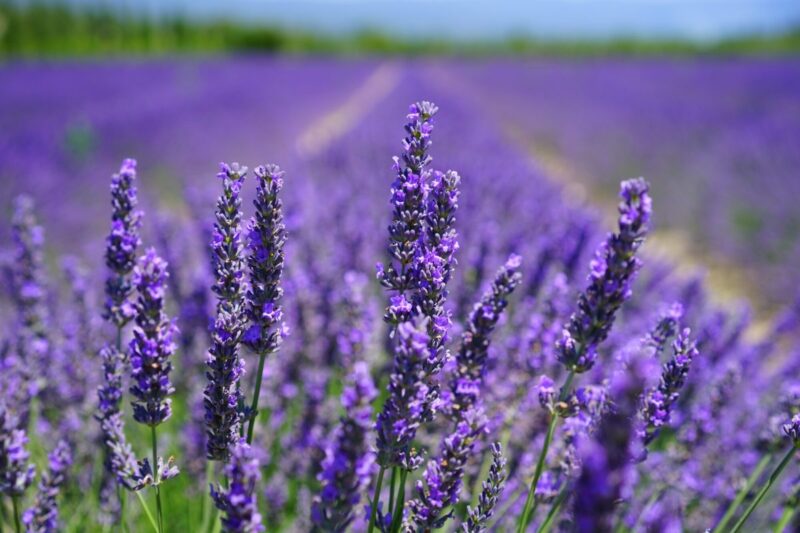Ever since the days of the victory garden in World War II, Americans have had a love affair with growing helpful plants in their backyard.
Even after the recent lockdowns of today’s climate, many of us are still obsessed with growing our own food and beautifying our outdoor spaces. One survey found that as many as 86% of homeowners plan to continue gardening this year as well.
Beyond vegetables and flowers, however, it’s worth noting that there are many medicinal herbs to grow in your yard. The right herbs can offer a wealth of helpful benefits you might not expect, and some of them even add a dash of attractive color to your garden! Here are the top six best medicinal herbs to grow this year.
1. Calendula
If you want a medicinal herb that does double duty as a lovely flowering plant, then calendula will be one of the best herbs to grow for medicinal purposes. Also known as “pot marigold,” the herb produces cheery gold flowers whose petals are edible and great for use in teas, broths, oils, soaks, salves, and tinctures.
Calendula has a wide spectrum of benefits. In teas, it’s great for digestion and heartburn, while using it as a salve can help spread its antibacterial and anti-inflammatory properties. In terms of topical use, calendula can help treat rashes, scrapes, and even acne.
Provided you have enough space outdoors, these plants are easy to grow and harvest and can act as annuals or short-lived perennials, depending on where you live.
2. Echinacea
Echinacea is a purple coneflower that grows well in mild to warm climates throughout the U.S. This perennial herb is a hardy one, making it a great choice for gardeners with less-than-green thumbs or those who live in hot or drought-prone areas.
In addition to adding a burst of color to your garden, echinacea can offer several health benefits. The plant can boost your immune system’s response to viral or bacterial infections like flu or the common cold. It’s also great for topical use to treat minor wounds and cuts.
3. Kratom
Though it’s just started to gain traction in the U.S. within the last decade, this traditional Southeast Asian herbal medicine has been around for years. Fans of the herb enjoy Kratom as a way to get a legal high, but kratom has additional medicinal benefits to be aware of.
Like caffeine, Kratom works by providing a stimulating effect, though higher doses can give users a high or act as a sedative.
The herb is new enough in the U.S. market that there are few rigorous studies addressing its benefits, but many users take it to relieve pain or help with mood disorders like anxiety and depression. It also sometimes serves as a treatment for opioid withdrawals. Traditionally, people in Southeast Asia chew the leaves or brew them into tea.
Kratom comes from the leaves of the mitragyna speciosa tree, which is easy to grow indoors or outdoors.
4. Dandelions
The line between herbs and weeds is nonexistent when it comes to medicinal plants. Many of the weeds we avoid in our gardens have benefits to offer, including the humble dandelion!
Dandelions are nutritious, provide antioxidants, and can even help support proper liver and kidney function and help balance blood pressure. What’s more, they’re great if you’re looking for easy-to-grow medicinal herbs, making them a natural addition to any garden—though they must be grown outdoors in full sun. If you can’t find wild dandelion seeds in areas around where you live, they’re easy to find online.
Dandelions work well tossed into your favorite meals, but they’re also great when used for tea.
5. Peppermint
This strong-smelling herb provides familiar flavor in teas and sweets, but it’s not just good for your taste buds. Research shows that peppermint leaves and oil can be great for your health as well.
In a topical application, peppermint can help soothe muscle soreness. Taken in tea, peppermint can help address digestive issues like nausea, vomiting, or indigestion.
If you’ve ever grown a plant in the mint family, you already know that the only concern you should have about this herb is that it might grow too wild! Peppermint will take over your yard if you plant it in the ground, so put it in a pot to control the spread.
6. Lavender
Known for its relaxing scent, lavender is an easy perennial to add to your garden. The plant’s flowers are known for their aromatic scent, which carries well if you use the plant as a border in a high-traffic area of your backyard.
The scent of lavender can help promote mental wellness, but the plant can also help support healthy digestion and even proper muscle tension.
Growing lavender isn’t hard, provided you have access to well-drained soil in an area with full sunlight. However, this plant can be difficult to grow from seed, so it may be better to find an established plant at your local garden store.
Try These Top Medicinal Herbs to Grow
Now that you have a better sense of the best medicinal herbs to grow in your garden, it’s time to head out and get your hands dirty! Whether or not you have a green thumb, these simple herbs are resilient and easy to grow, as long as you spend a little time researching and paying attention to the plant’s needs. With a little effort, you’ll have your own medicine garden blooming in no time.
Looking for more tips and tricks to help you make the most of your health and home? Check out our other posts for additional insights.












